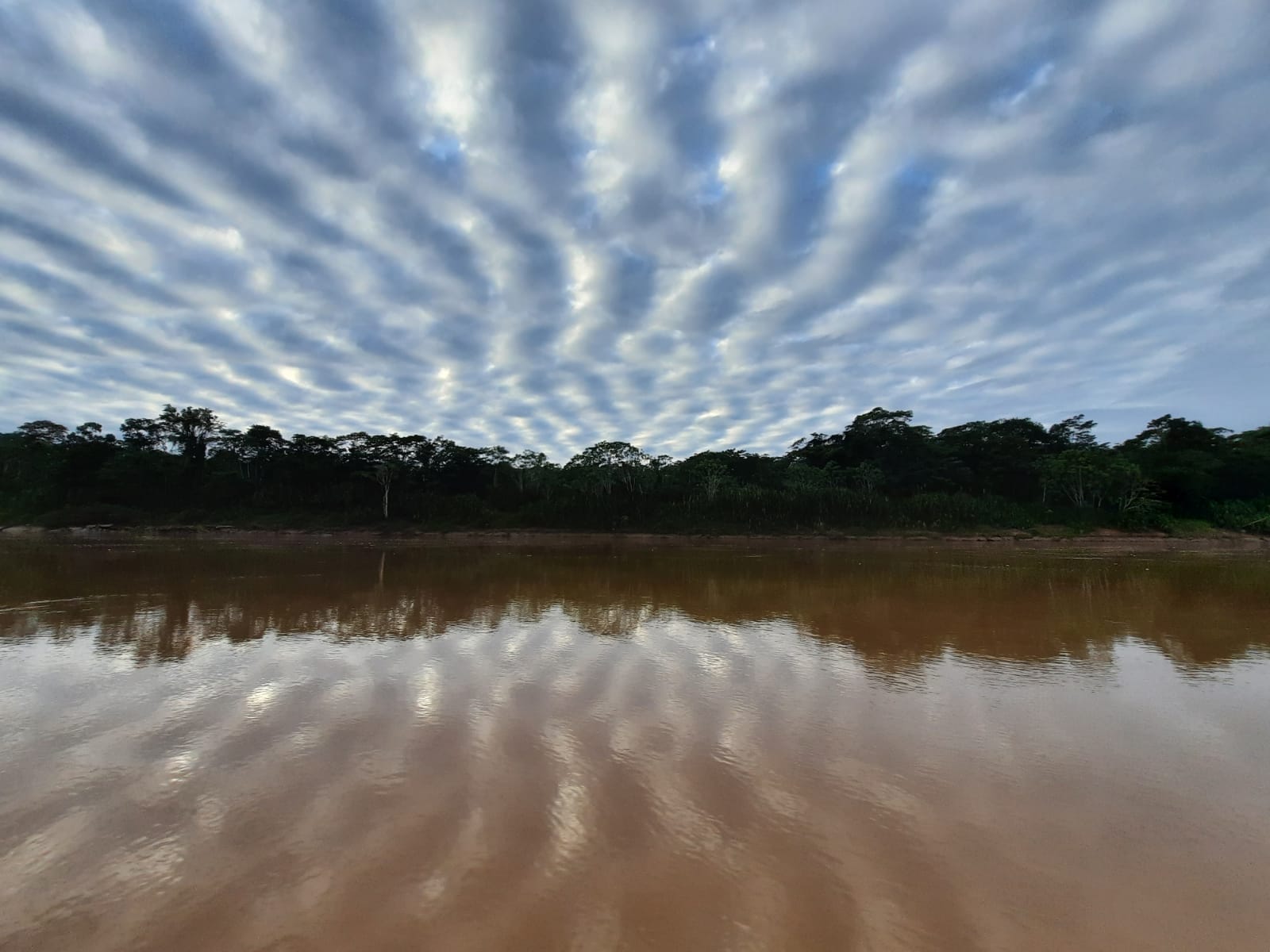The Peruvian Amazon: Tambopata Eco Lodge via Puerto Maldonado
In this final post from the Salterton Arts Review’s Peruvian excursion, we take a look at tourism in the Peruvian Amazon. Does the Tambopata Eco Lodge strike the right balance between authentic visitor experiences and sustainability?

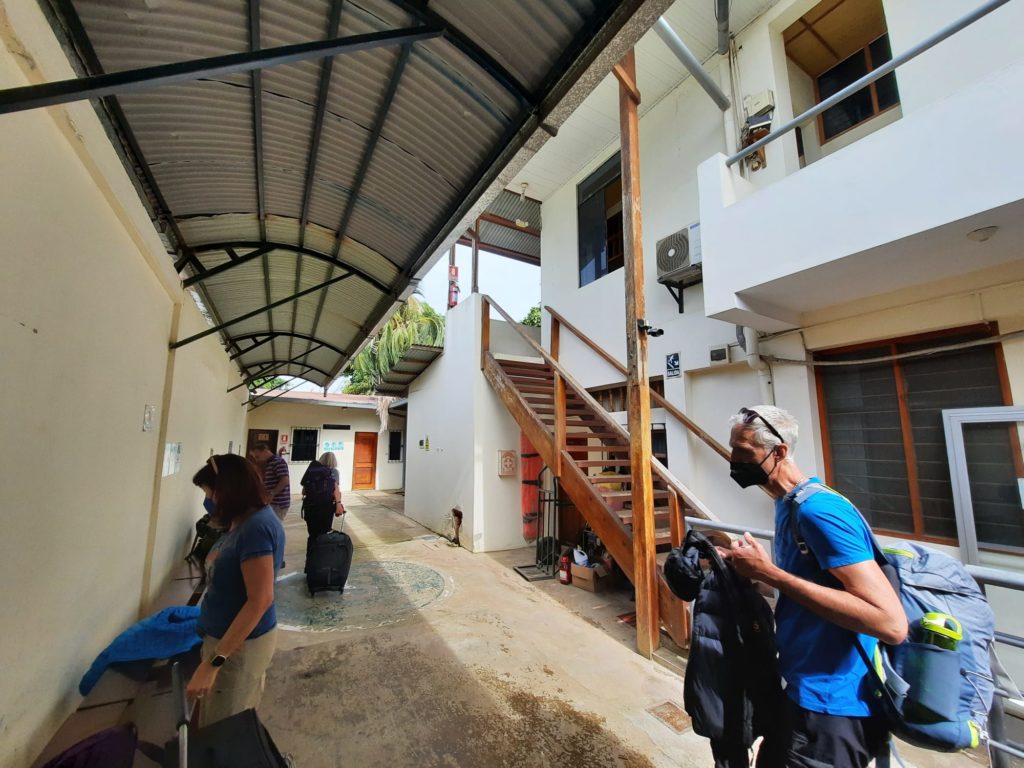
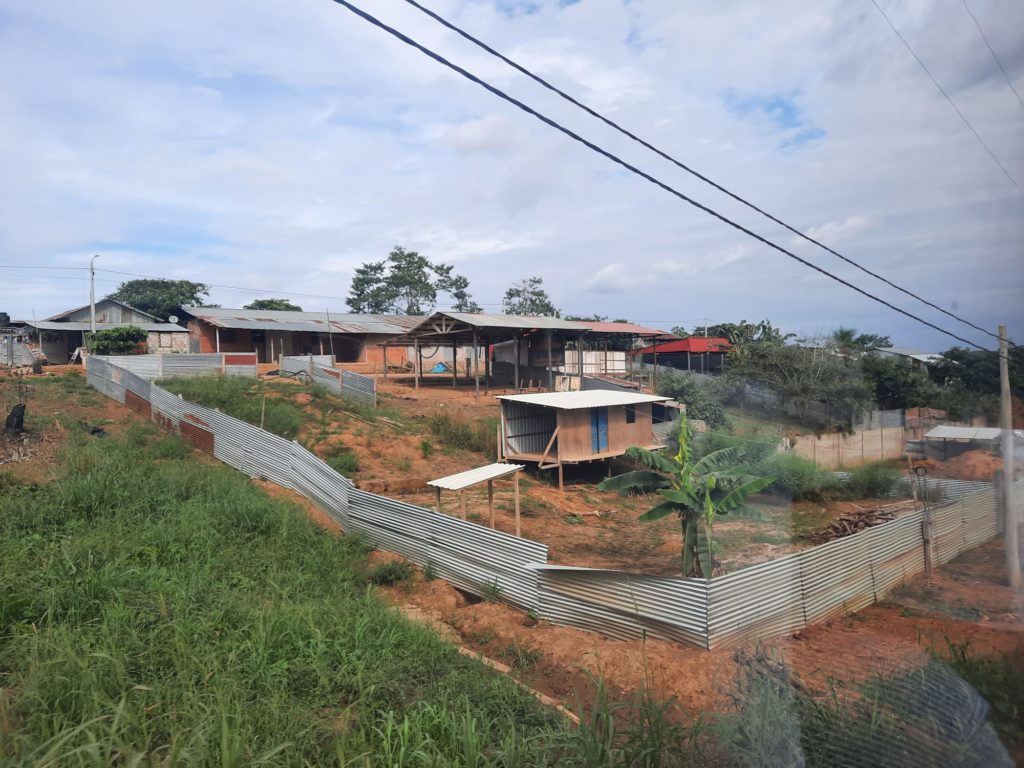

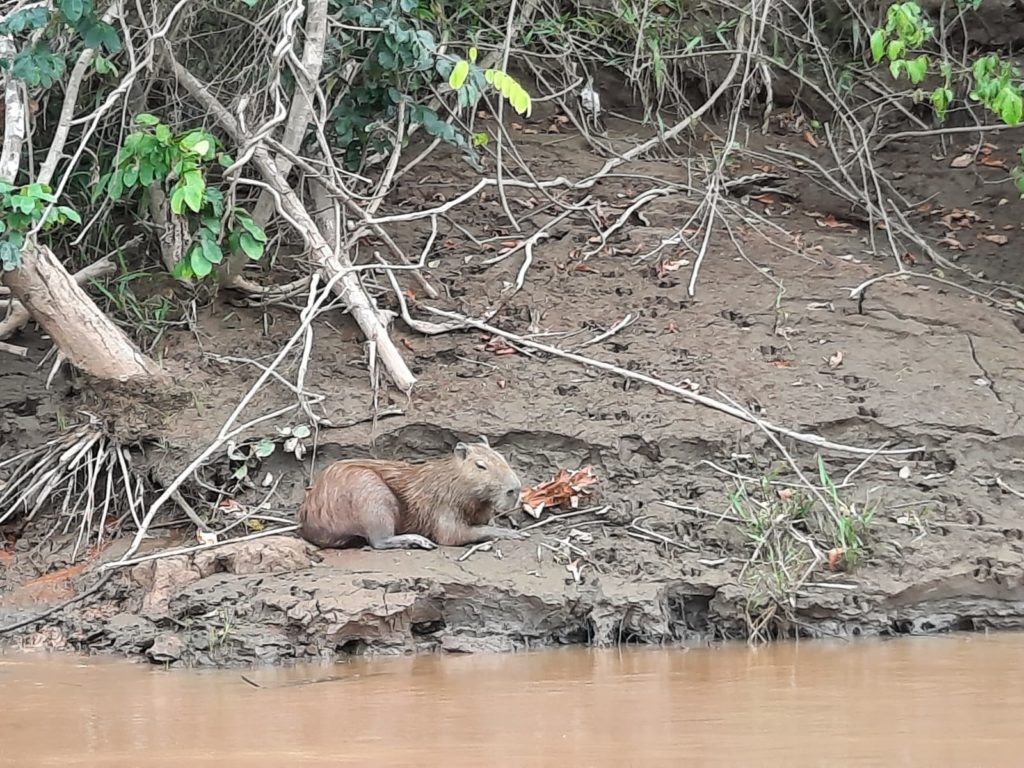
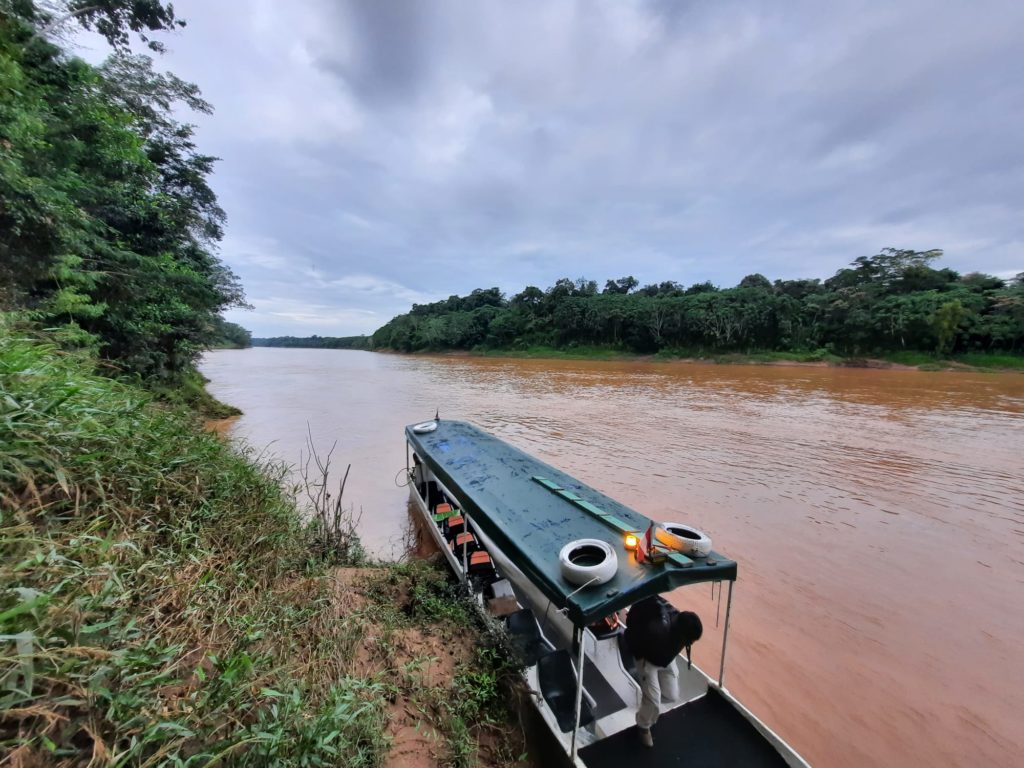
Heading to the Amazon!
After visiting Lima and Cusco, checking out the Sacred Valley and walking the Inca Trail to Machu Picchu, there was one final leg to my Peruvian adventure with G Adventures. I had chosen an Amazon extension, which would see me fly to Puerto Maldonado and travel to the Tambopata Eco Lodge for two nights.
If you’re anything like me, you don’t really associate Peru with the Amazon. And yet astonishingly, the Amazon makes up 60% of the country: the second-largest section of the Amazon outside Brazil’s. Only 5% of Peru’s population live here, the majority living on the coast on the other side of the Andes.
As a foreign tourist, there are a couple of places you can easily reach for an Amazon experience. The first is Iquitos in Peru’s northern Amazon region, the world’s largest city that cannot be reached by road. I haven’t visited Iquitos, but from what I’ve heard and seen from those who have, the jungle experiences around here are very well-developed. There are photo opportunities with different animals, dolphin-spotting cruises, monkey sanctuaries, and more besides. Puerto Maldonado, which I visited, is a little different. Puerto Maldonado is in the south of Peru, near the Bolivian border. Originally established during a late 19th Century rubber boom, the area around Puerto Maldonado is now known for pristine rainforest and small scale gold mining. It was also my jumping off point to experience the Amazon for myself!

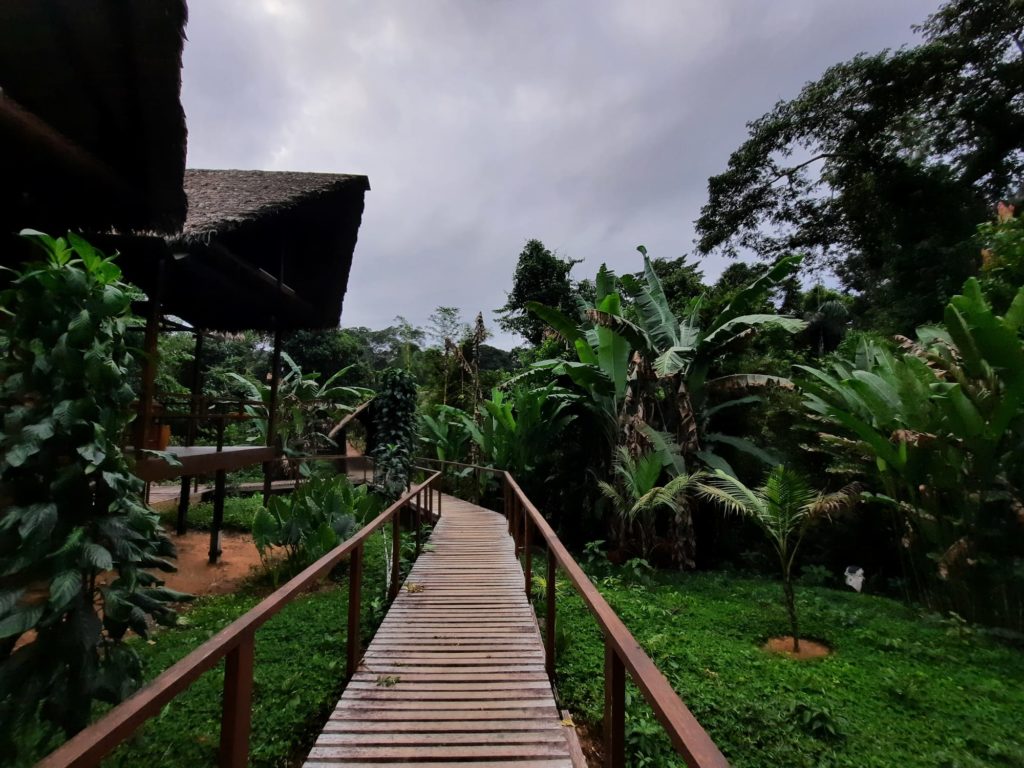
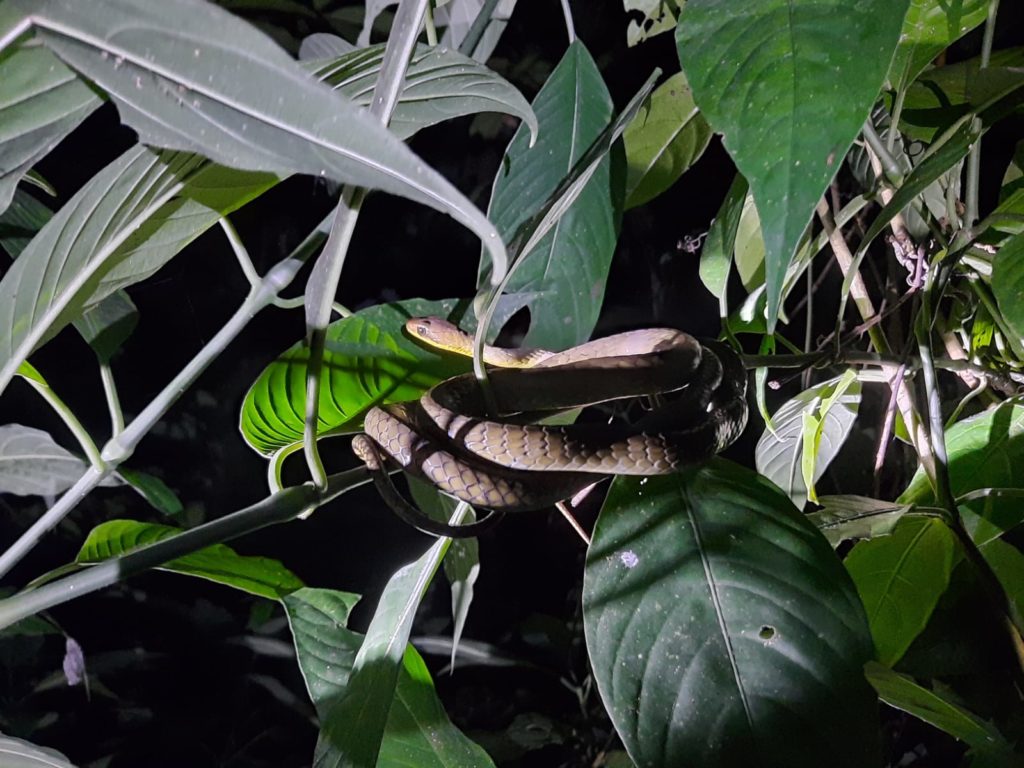
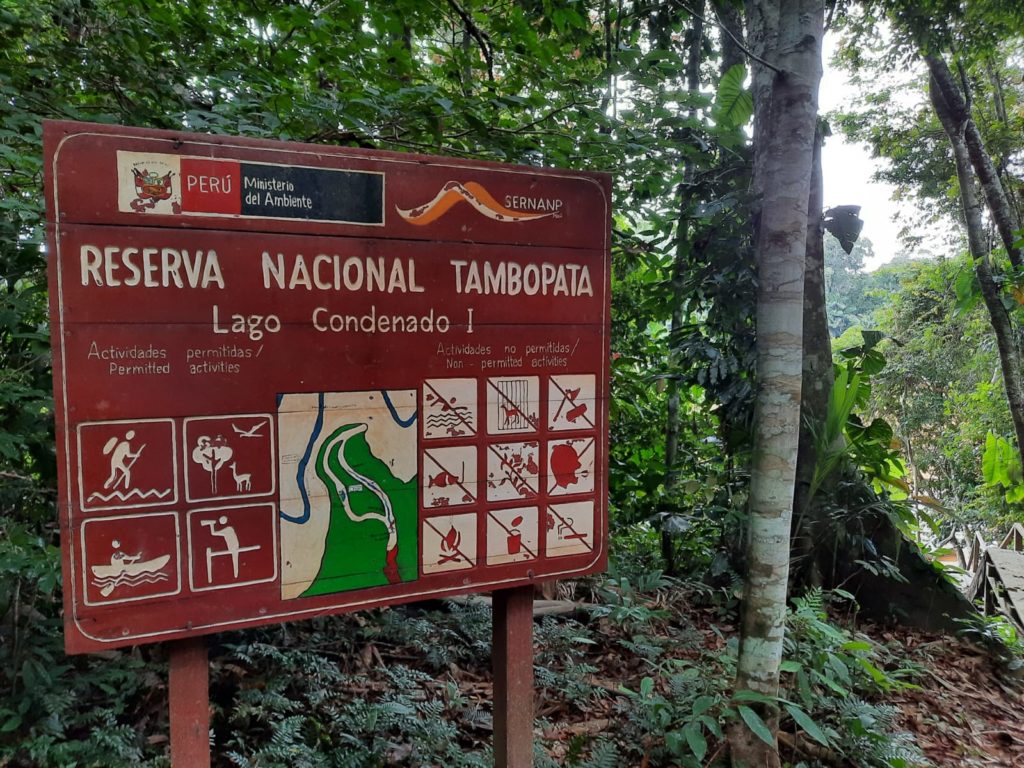
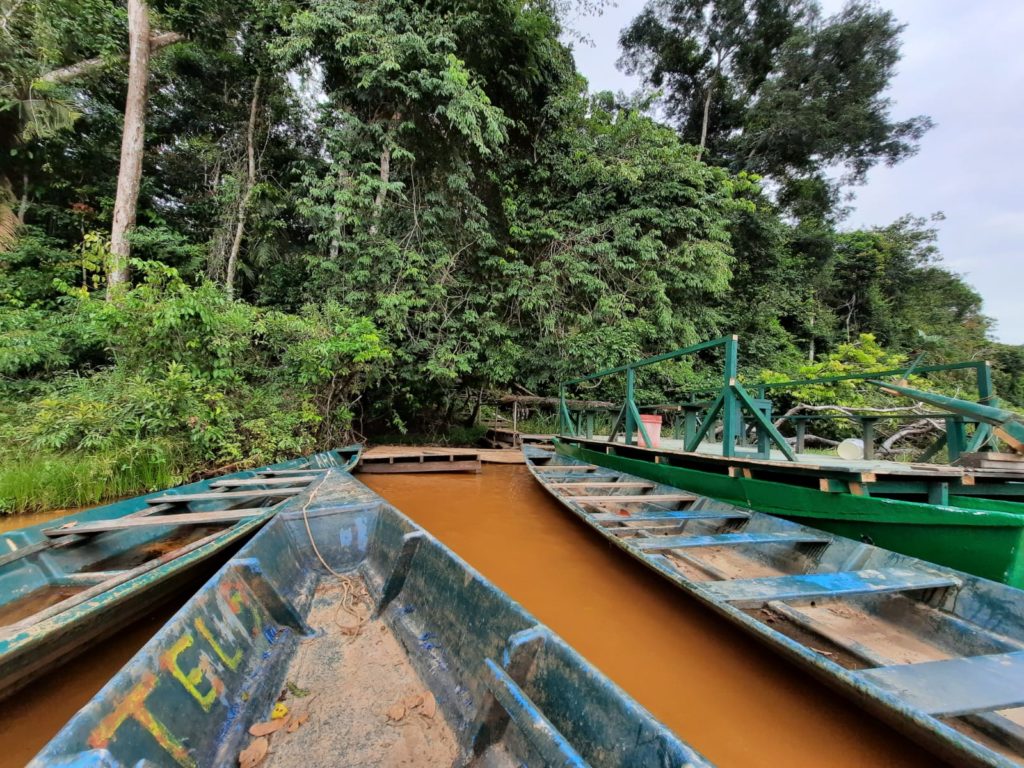
The Amazon With G Adventures
My Peruvian trip with G Adventures involved meeting in Lima, exploring Cusco, the Sacred Valley and Machu Picchu with a guide, and then flying on to Puerto Maldonado for this final leg of the journey before heading back to Lima. The Tambopata Eco Lodge is called G Lodge Amazon on G Adventures’ itinerary, so I assume it’s either owned or majority supported by the travel company. Various G Adventures tours include this Amazon stay as an option, and the experience seems to follow a formula no matter which one you select.
After pickup from the airport, your group heads to a G Adventures office in Puerto Maldonado. This is just a quick stop to repack bags, and a bathroom and water break before you continue. You are able to leave your main pack/suitcase here, and take what you need in a provided duffel bag. Then it’s a bus ride of maybe 30 minutes to an hour to the indigenous settlement of Infierno (Hell). The name apparently comes from when this was a ‘Green Hell’ for early prospectors and settlers. Only the ‘Green’ has been dropped over time.
Anyway. From Infierno, you take a boat to the Tambopata Eco Lodge. Your guide will be keeping an eye out for any animals along the river bank, so you can do some caiman and capybara spotting. It’s about two hours to the lodge. It’s all part of the experience though – I loved watching the river, clouds and reflections. It reminded me of the photography of Sebastião Salgado. And even moving at a fair pace, I could smell the beautifully perfumed trees. This was an aspect of the Amazon I had never even considered when I’d seen it in images and on TV.


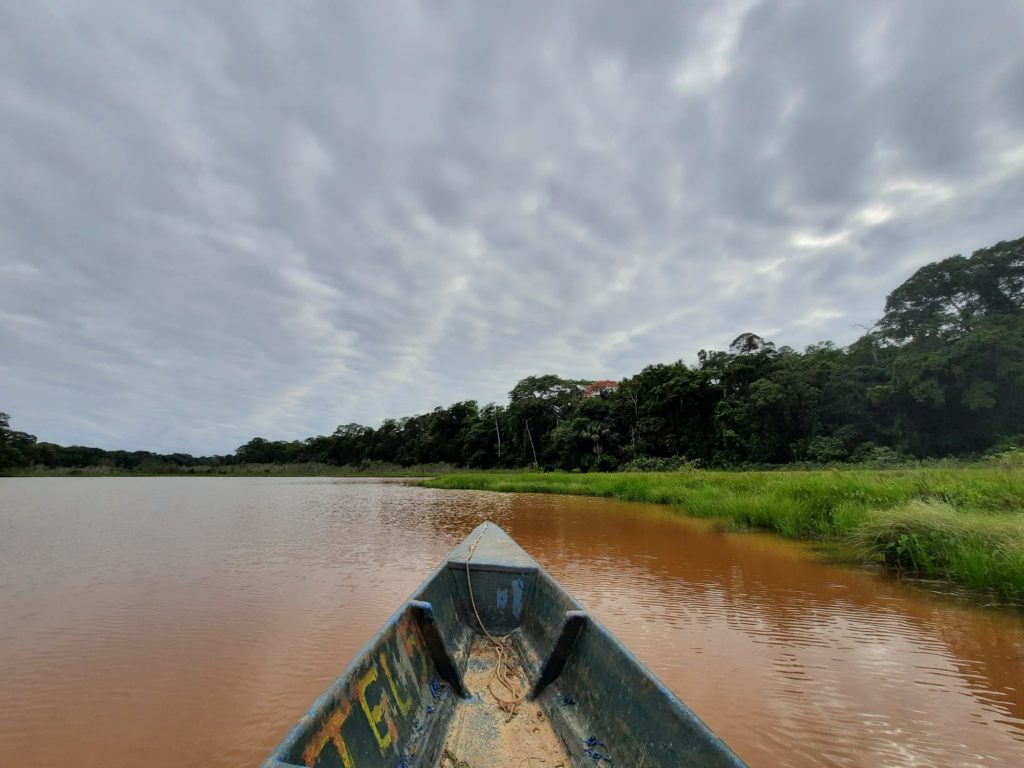
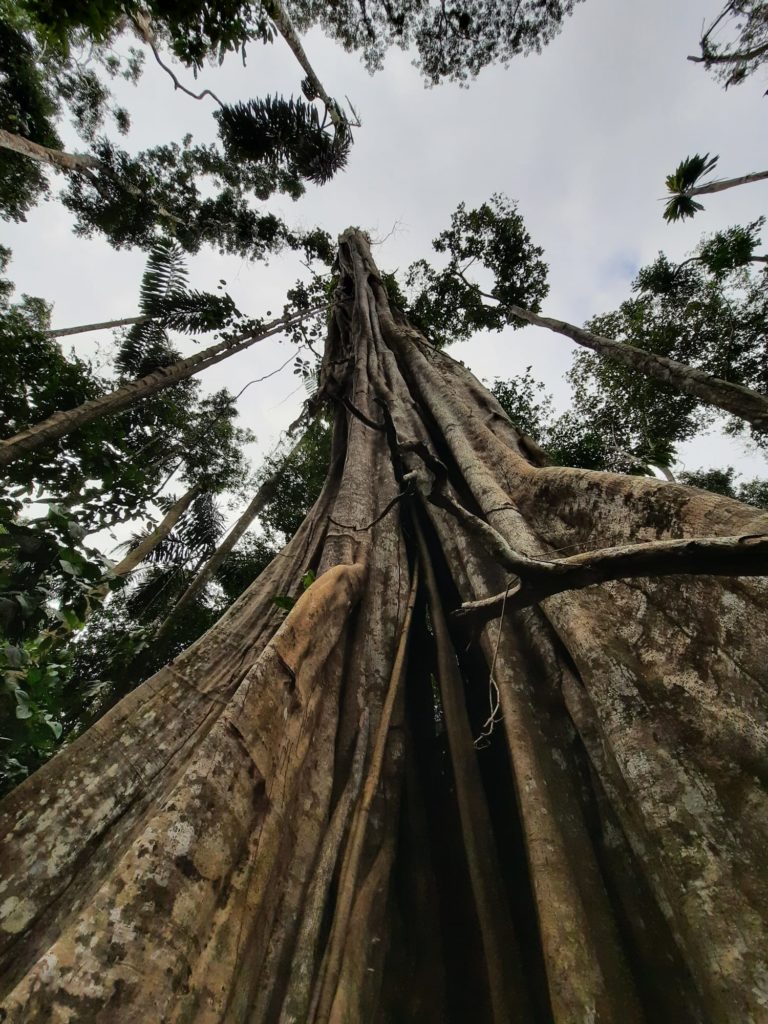
The Tambopata Eco Lodge Experience
So once at Tambopata Eco Lodge, your experience begins in earnest. It’s marketed as being a couple of days, but is really a full day with a little bit on either side. Because of the timing of flights, we arrived just before sunset on the first day. We got settled in (to our lovely, candle-lit rooms), and then had a drink and dinner. After dinner we went out for a night walk with our guide, to see what nocturnal wildlife we could spot.
The following day, we went by boat a short distance across the river. We walked to an oxbow lake which we explored by canoe (thankfully the guide was paddling rather than me); and then walked on to see the biggest tree in the area and learn more about the jungle flora and fauna. In the afternoon we went to a ‘farm’ which supplies the lodge. Think waiting for fruit to ripen and then collecting it, rather than any intensive agricultural activities. And our second evening was spent caiman spotting. In the morning after breakfast it was already time to head back by boat to Puerto Maldonado and catch our flight to Lima.
The Tambopata Eco Lodge was not 100% back up and running when I visited (May 2022). There wasn’t a full bar offering for instance, and not all of the walking trails have been cleared again. But given how pressed we were for time, this wasn’t such a concern for me. In an ideal scenario, I would have liked an additional day here to relax in a hammock, read a book, have a drink. Or even just spend time enjoying the lovely accommodation. But if you go in with the attitude that this is an Amazon ‘taster’, it’s very well-organised and enjoyable.
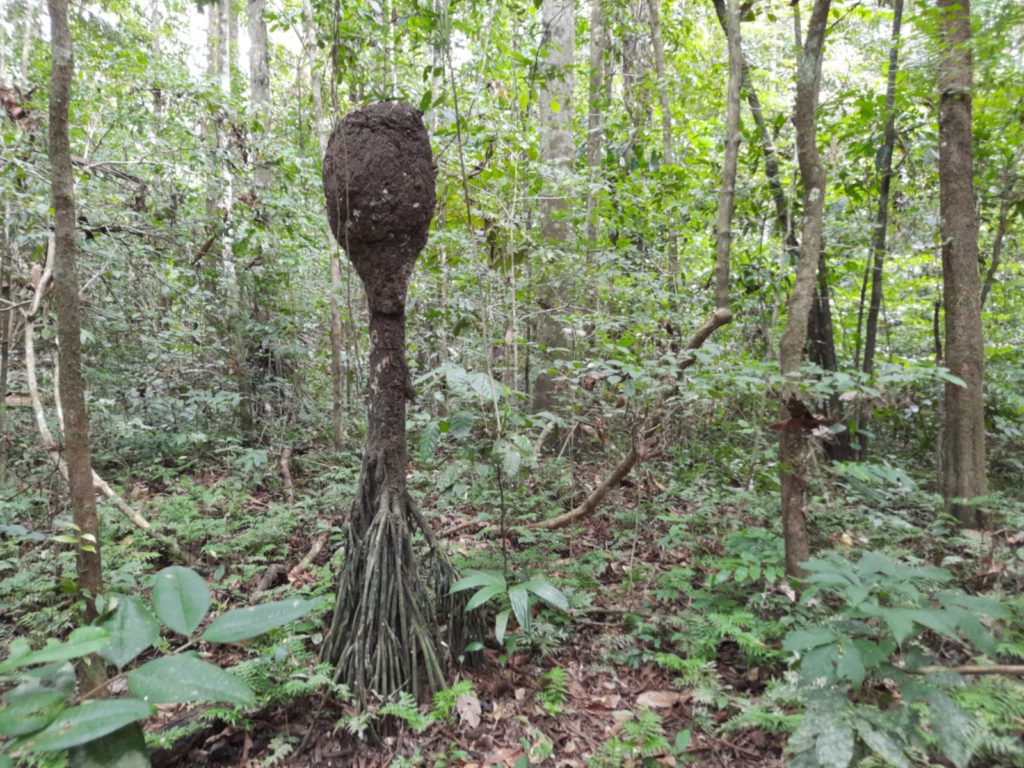
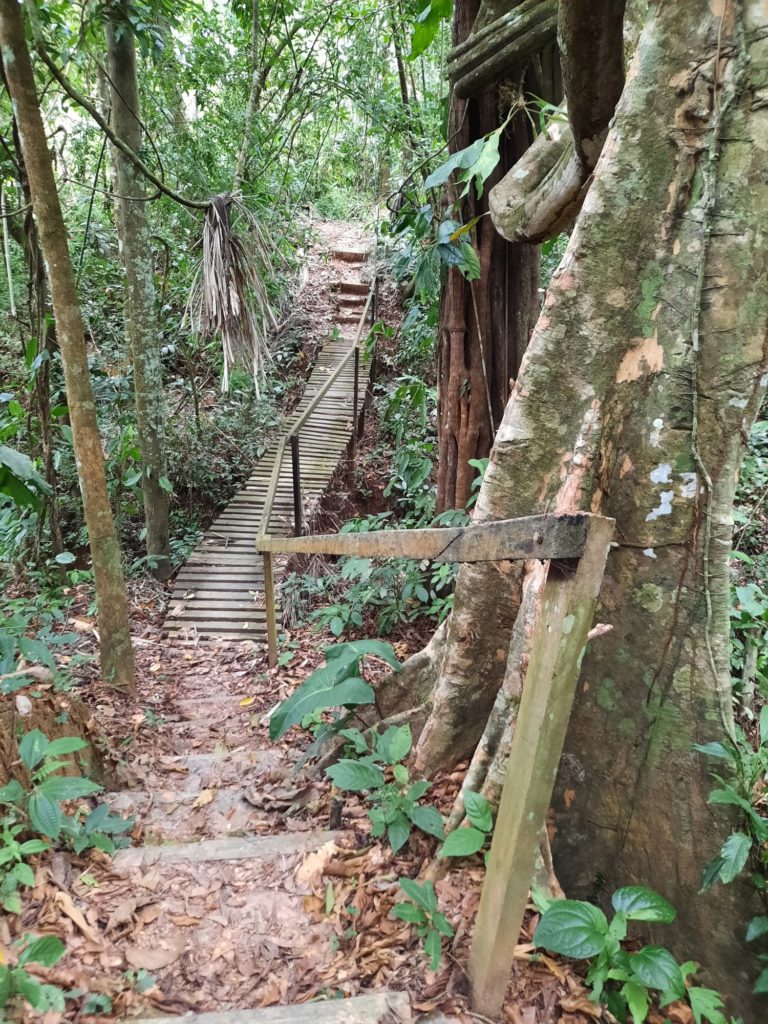
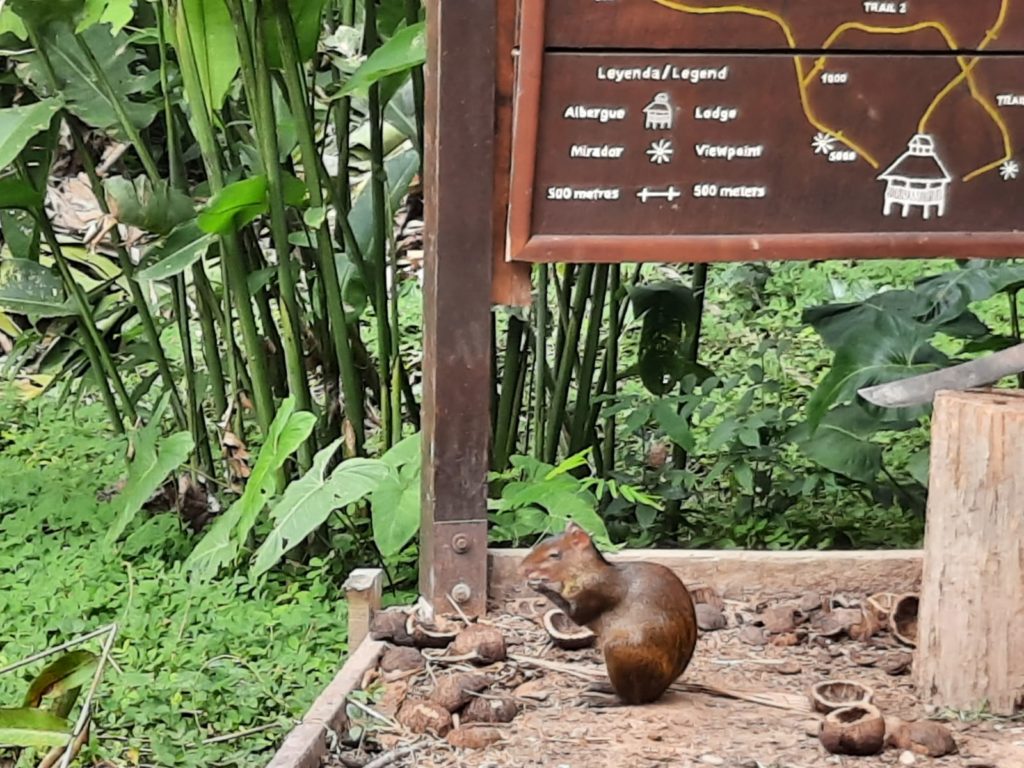
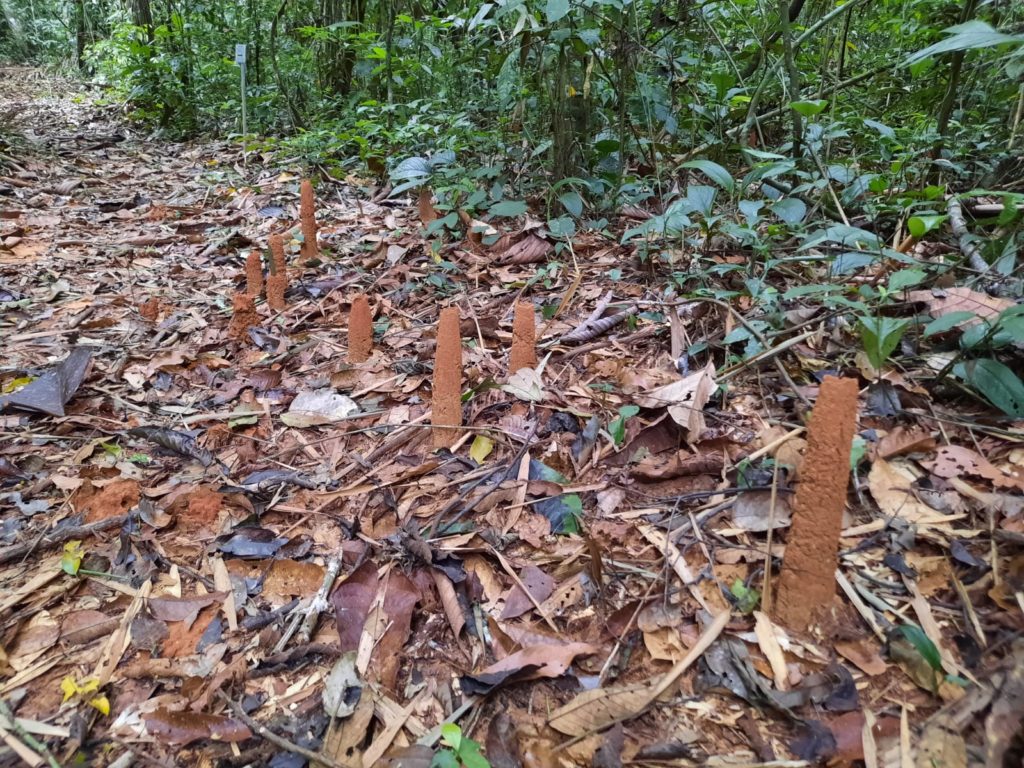
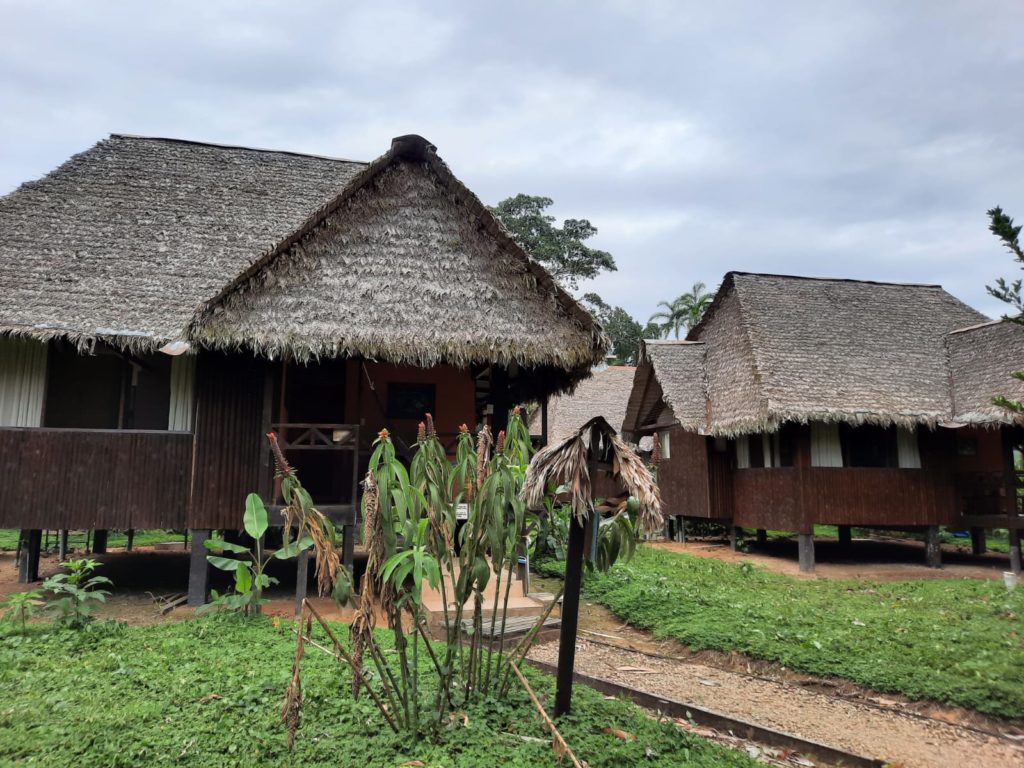

An Amazon Taster
So what did I actually see and experience on this Amazon taster? This is where the contrast between the Iquitos and Puerto Maldonado experiences became apparent. Puerto Maldonado prides itself on pristine rainforest. Our guide set our expectations while we were on the bus to Infierno; if there were animals around we would see them, if there weren’t, we wouldn’t. No special requests, although I did manage to see my top two of some monkeys and a sloth, so I was happy.
And what I did learn very quickly is that the wildlife experience in the Amazon is very subject to weather. When I visited, a cold wind was coming in from Patagonia. It was decidedly chilly (for a rainforest). And so a lot of the animals were quieter than usual. The guides did their best to find us what they could, but it was clear this wasn’t the usual experience.
Nonetheless, I saw a few different kinds of monkeys, various caimans, and the one sloth who decided to come and hang out near our lodge. There was a snake, capybaras, and other rodents I didn’t know existed. I heard the roar of howler monkeys, and the booming of bamboo rats. Then there were the insects: leaf cutter ants, huge termite colonies, and beautiful butterflies. And a tarantula or two tempted out of their hidey holes. With bats and turtles and birds also in the mix, all in all I didn’t do too badly for a very quiet time in the jungle!
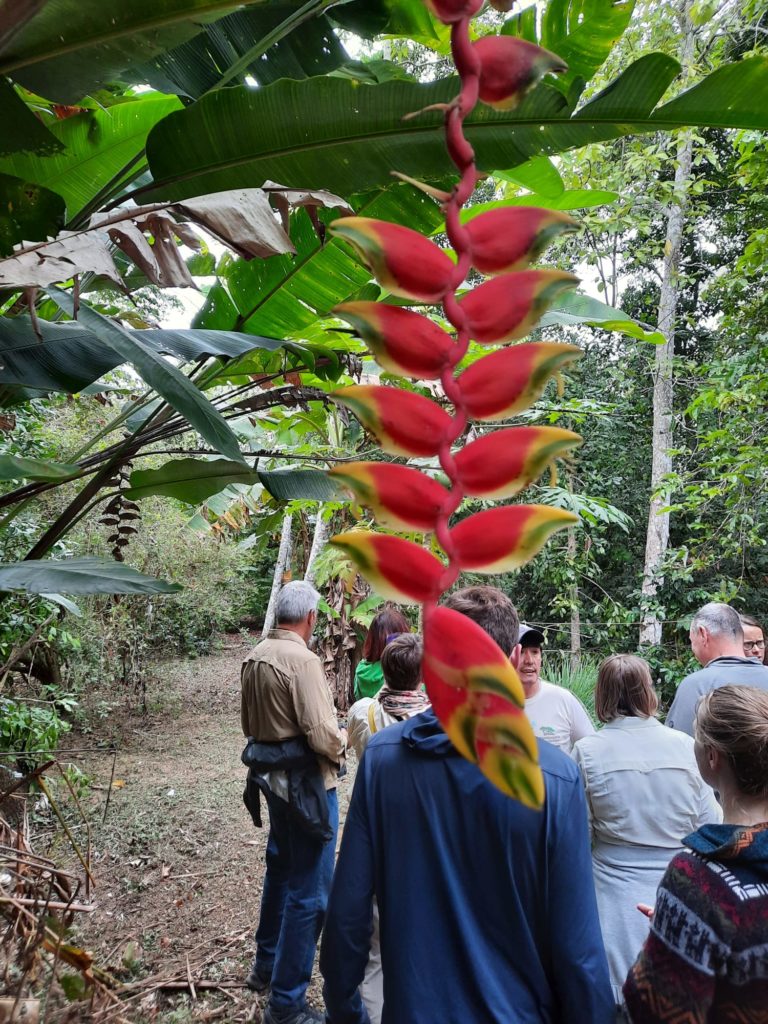
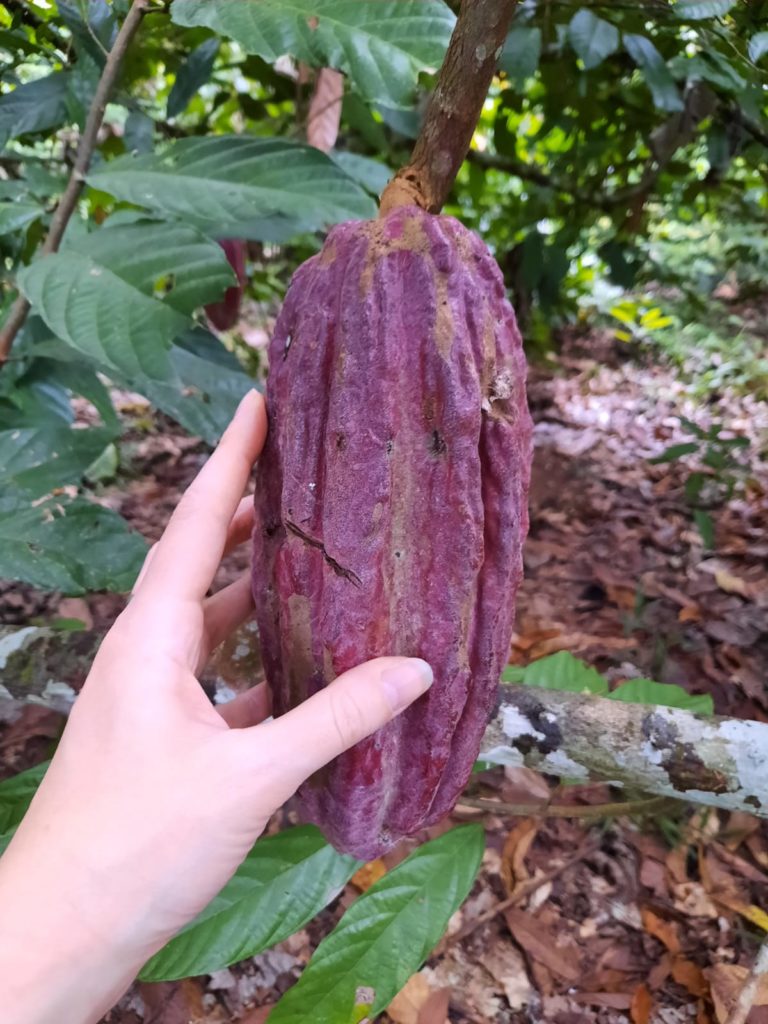
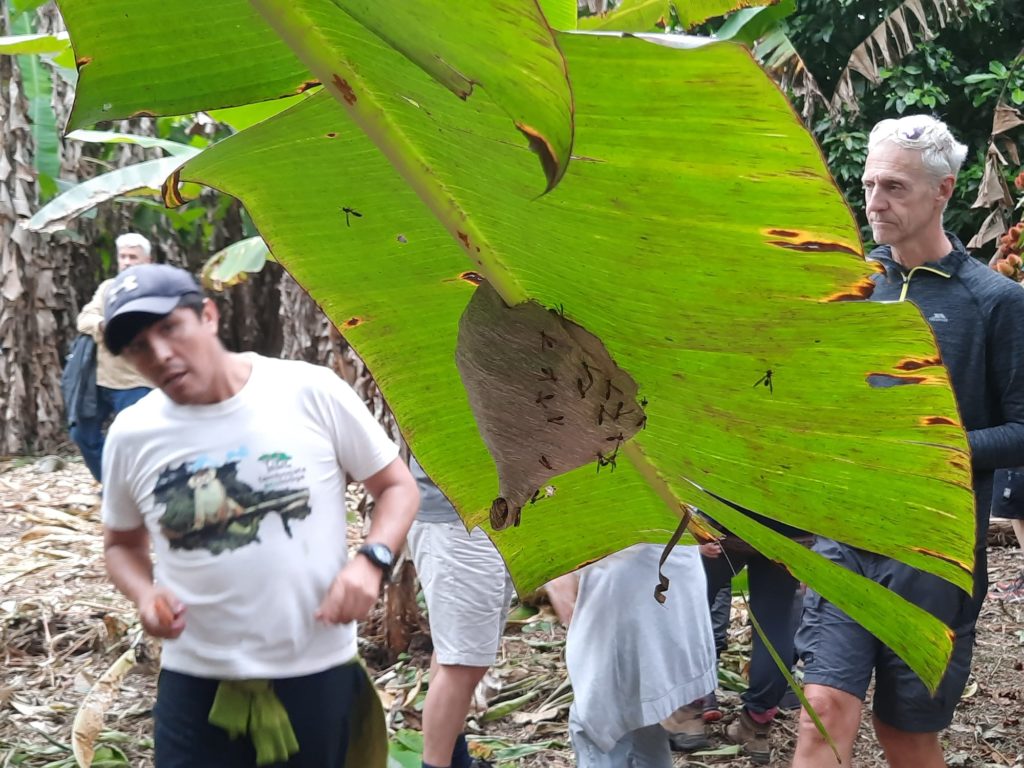
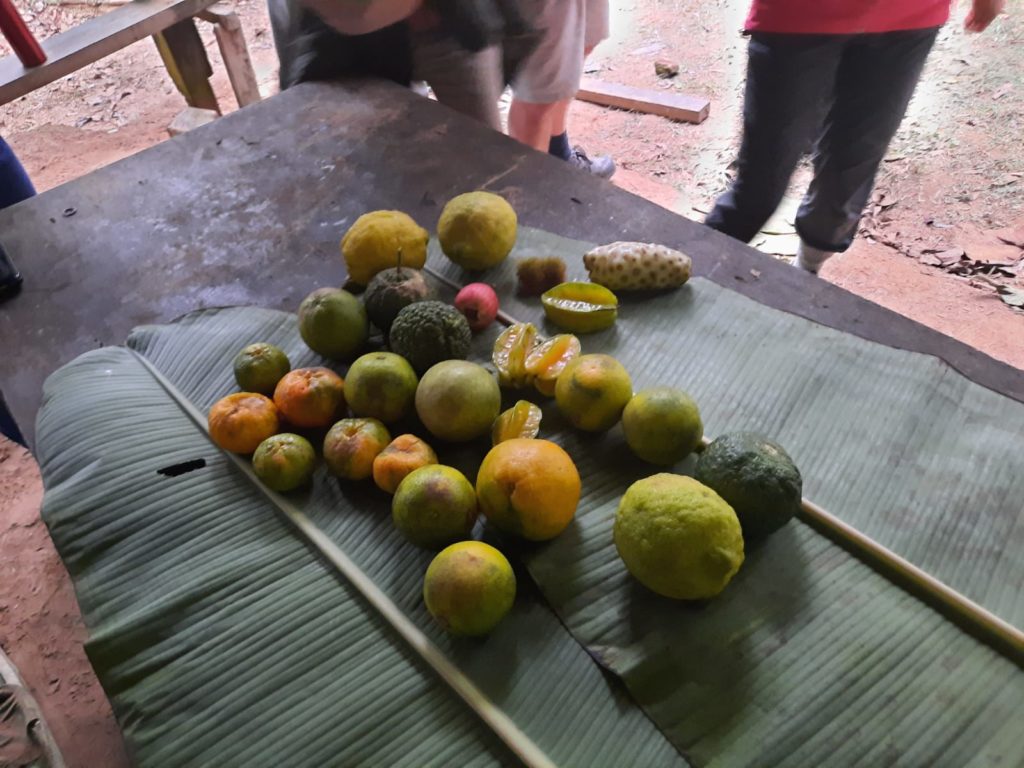
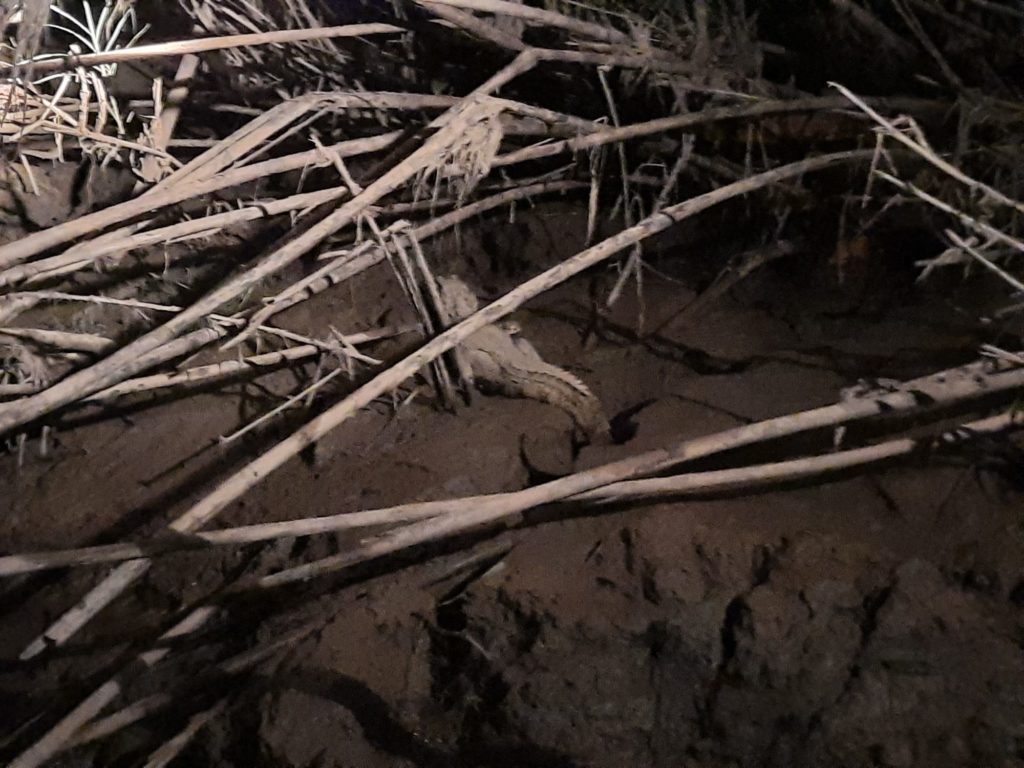

Experience vs. Impact
One thing that was on my mind as I visited the Amazon with G Adventures was the increasingly difficult decision making as a tourist between what I personally want to experience, vs. how much of an impact I am willing to have on that environment. For me to have this experience at the Tambopata Eco Lodge, I travelled by plane and boat, to a lodge that has been cleared from the jungle, and is supported by farms using slash and burn agriculture. The Tambopata Eco Lodge try to minimise their footprint with sustainable practices. Hence no electricity in the accommodation aside from solar showers. But there is a footprint nonetheless.
This isn’t a problem that I have an answer to. But I did feel satisfied with my decision to visit the Amazon in this way. The Iquitos experience sounds to me (with no first hand experience) a little more uncomfortable, with animals at the behest of tourists rather than the luck of the draw we had trying to spot them. I also learned a lot from my guide, who shared details of his childhood growing up in the northern Peruvian Amazon. He was an expert animal spotter, but also had an interesting perspective on indigenous knowledge, and sustainable tourism.
So all in all, these are considerations you will need to weigh up for yourself in deciding whether to visit the Amazon here or elsewhere! I am lucky to have had the opportunity to visit Peru in general, and especially to have finished my trip with the sights, sounds and even smells of the Amazon rainforest.
Trending
If you see this after your page is loaded completely, leafletJS files are missing.

